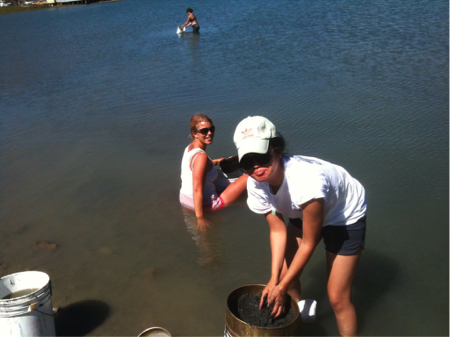By: John Lee
Hi! My name is John (Chi Yen) Lee, and I am a rising junior pursuing an Engineering degree at Harvey Mudd College. This summer, I am very fortunate to have the opportunity to work as a part of the Wrigley Summer Fellowship on Catalina to study robotics and its application to marine biology.
Our research lab (Lab of Autonomous Intelligent Robot) has been collaborating with CSULB’s Shark Lab to track sharks and other marine animals. Currently, most of the tracking is done by human and requires a lot of time and commitment. The goal of our lab is to make the process of tracking marine animals simpler by employing robots to do the tracking instead.
The first step in tracking an animal is localizing it. In order localize the fish underwater, we use a tracking system that consists of a pair underwater hydrophones and an acoustic tag. The tag is placed on the fish, and it pings a signal to the hydrophones on the robot at a regular time interval. Using the time of sound flight underwater, the robot is able to deduce the distance of the target (fish) from itself. By accounting for the difference in time the signal hits each hydrophone, the robot can calculate the possible angle that the signal is coming from. With that information, the robot then uses an on board computer to compute the necessary maneuver.
Once the robot localizes the animal, the next step is to follow it. In order to track the animal without altering its behavior, the robot is programmed to navigate around it in a circular fashion at a set distance. The onboard GPS tells the robot its location relative to the target, and a feedback control loop decides the proper rudder angle and speed to directs the robot to its designated path.
As of this week, our effort has been focusing on getting the hydrophone system in order. We resolved various issues such as time drift between hydrophone processors, software infrastructure, and particle filtering. Now with most of our system ready to go, the next step will be tracking real fish for the entire month of August. Wrigley’s easy access to the ocean provides us with a perfect testing ground for our robot. Big Fisherman’s Cove is rich with interesting targets like kelp bass and leopard shark. I look forward to implementing and testing our progress on the island!






